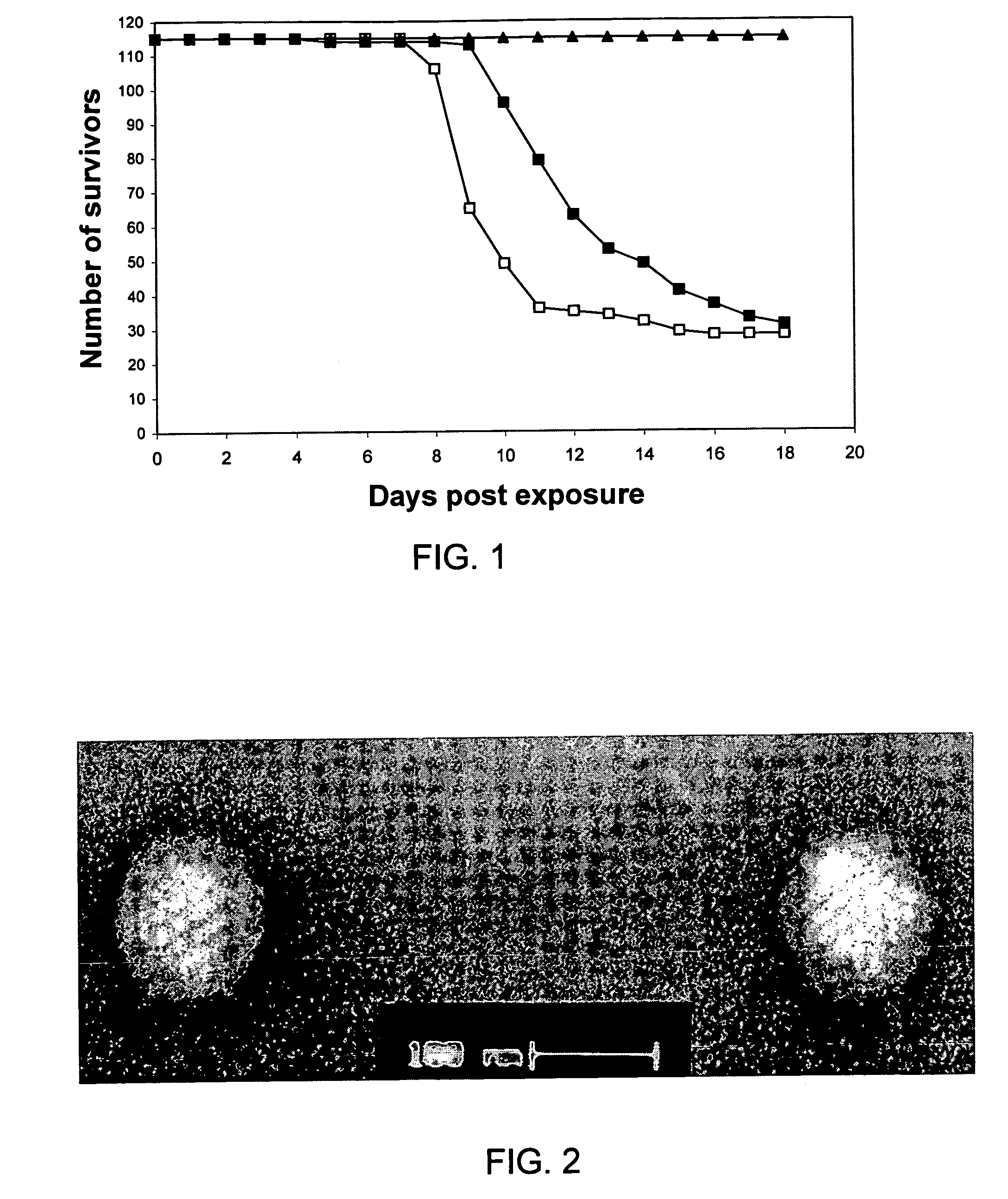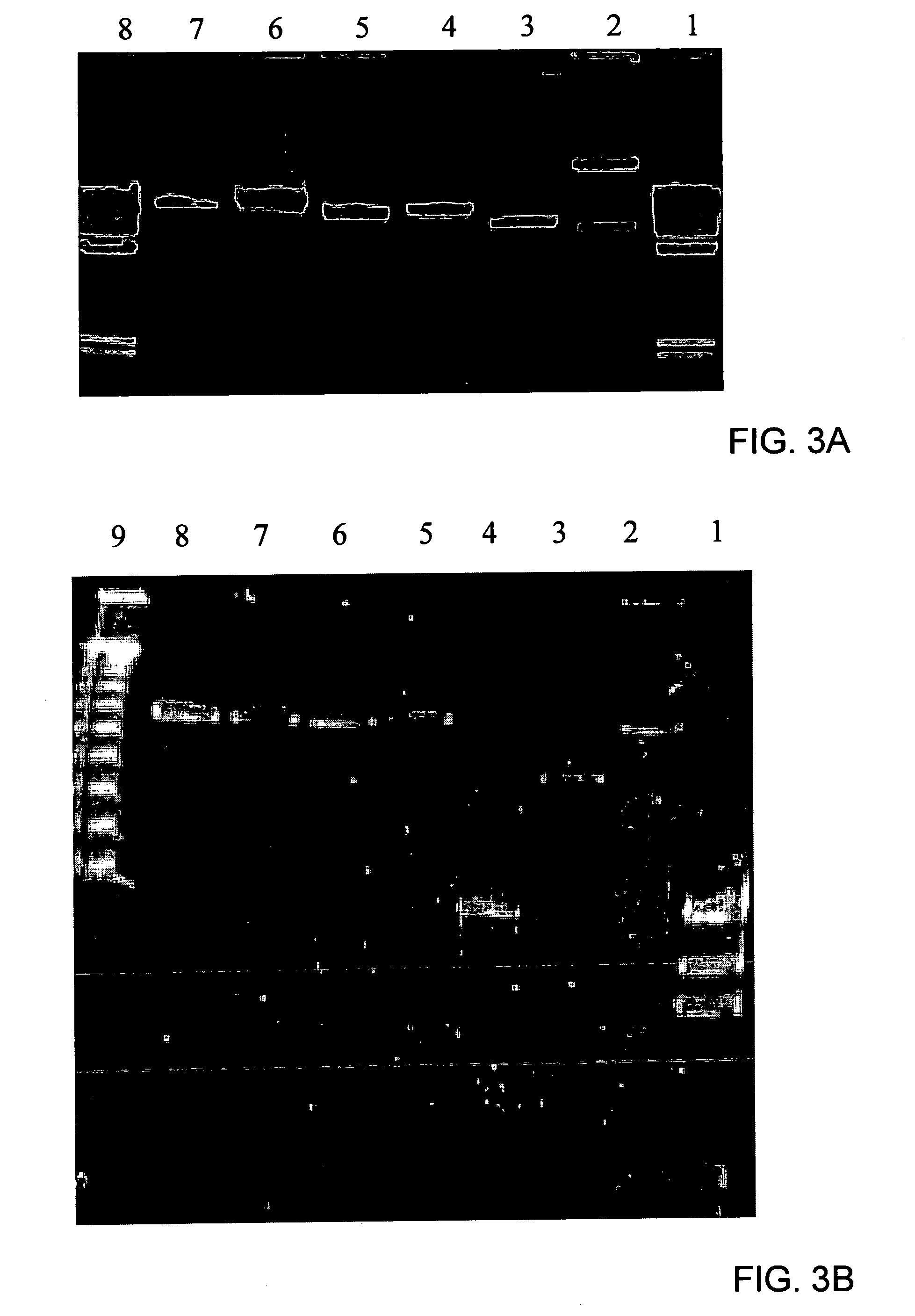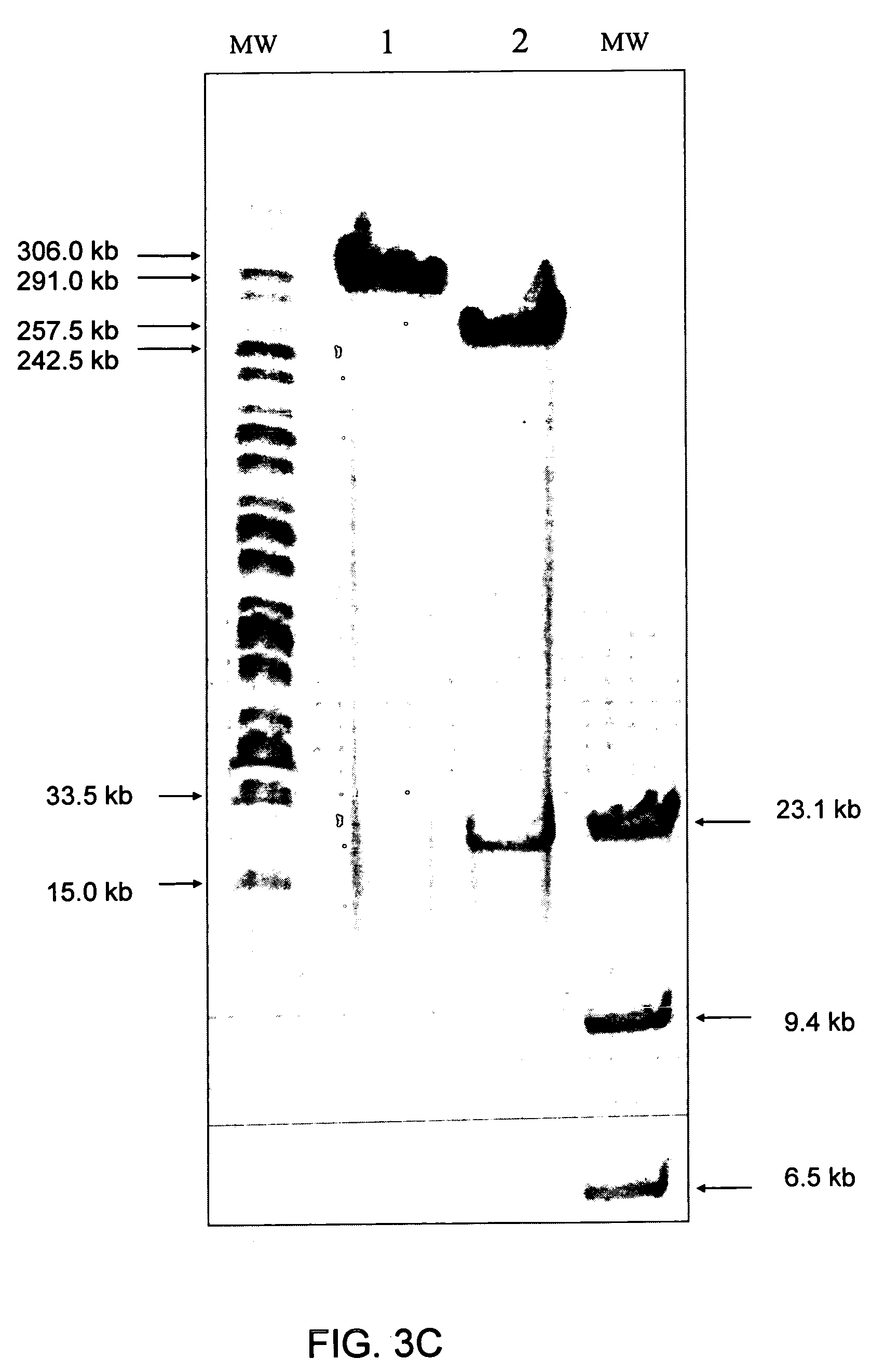Immunizing fish against viral infection
a technology for fish and viruses, applied in the field of fish viral infection control, can solve the problems of severe financial loss, limited morbidity and mortality, and ineffective antiviral agents for fish viruses, and achieve the effect of assessing the resistance of fish to the diseas
- Summary
- Abstract
- Description
- Claims
- Application Information
AI Technical Summary
Benefits of technology
Problems solved by technology
Method used
Image
Examples
example 1
Preparation of Cell Cultures
[0137]Caudal fins of 50 gr Koi or common carp were removed from anesthetized fish, bathed in 1% sodium hypochloride solutions for 1 min, and then rinsed in 70% ethanol for a few seconds. Fins were then washed three times for 0.5 min in PBS containing penicillin and streptomycin. The fins were transferred to Petri dishes, extensively minced with scissors, and semi-dry small tissue pieces of approximately 1 mm3 placed in dry 50 ml culture flasks. After 60-minute incubation at room temperature, the clumps adhering to the flasks were covered with culture media containing 60% Dulbeco modified Essential medium (DMEM) and 20% Leibovitz L-15 medium (supplied by Biological Industries, Kibbutz Beit Haemek, Israel), 10% fetal calf serum (FCS) (Biological Industries, Kibbutz Beit Haemek, Israel), 10% tryptose phosphate, supplemented with 1% HEPES and antibiotics. During incubation of 10-14 days at 22° C., cells grew out from the tissue to form a monolayer around each...
example 2
Purification of the Virus from Culture Medium
[0138]Medium harvested from infected CFC was cleared of cells and cell debris by centrifugation for 10 min at 10,000×g. The virus was then pelleted by centrifugation in the Beckman Ti-60 rotor for 50 min at 100,00×g. Pellets were suspended in PBS and loaded on a 15-65% (w / v) sucrose gradient prepared in PBS and centrifuged for 60 min at 110,000×g in the Beckman SW28 rotor. Bands were aspirated from tubes, diluted tenfold in PBS and re-pelleted. Pellets were suspended in PBS and frozen at −75° C. for further investigation.
example 3
Viral DNA Purification and Plasmid Construction
[0139]Purified viral pellets were suspended in TNE buffer (10 mM Tris pH7.8, 100 nM NaCl and 1 nM EDTA) containing 0.5% sodium dodecyl sulphate (SDS). The virus preparation was treated with proteinase K (50 μg / ml) for 3 h. Viral DNA was extracted with phenol, precipitated by ethanol and DNA pellets were suspended in TNE.
[0140]Viral DNA was cleaved with BarmHI and EcoRI and fragments were cloned into Bluescript II KS plasmid (Alting et al., Nucl. Acids Res., Vol. 17, 9494, 1989). The inserted viral DNA fragments were sequenced by PCR using T7 and T3 primers and their sequences analyzed by the standard BLAST Program (Altschul et al., Nucl. Acids Res., Vol. 25, 3389-3402, 1997 and Short et al., Nucl. Acids Res., Vol. 16, 7583-7600, 1988).
PUM
| Property | Measurement | Unit |
|---|---|---|
| size | aaaaa | aaaaa |
| temperature | aaaaa | aaaaa |
| weight | aaaaa | aaaaa |
Abstract
Description
Claims
Application Information
 Login to View More
Login to View More - R&D
- Intellectual Property
- Life Sciences
- Materials
- Tech Scout
- Unparalleled Data Quality
- Higher Quality Content
- 60% Fewer Hallucinations
Browse by: Latest US Patents, China's latest patents, Technical Efficacy Thesaurus, Application Domain, Technology Topic, Popular Technical Reports.
© 2025 PatSnap. All rights reserved.Legal|Privacy policy|Modern Slavery Act Transparency Statement|Sitemap|About US| Contact US: help@patsnap.com



